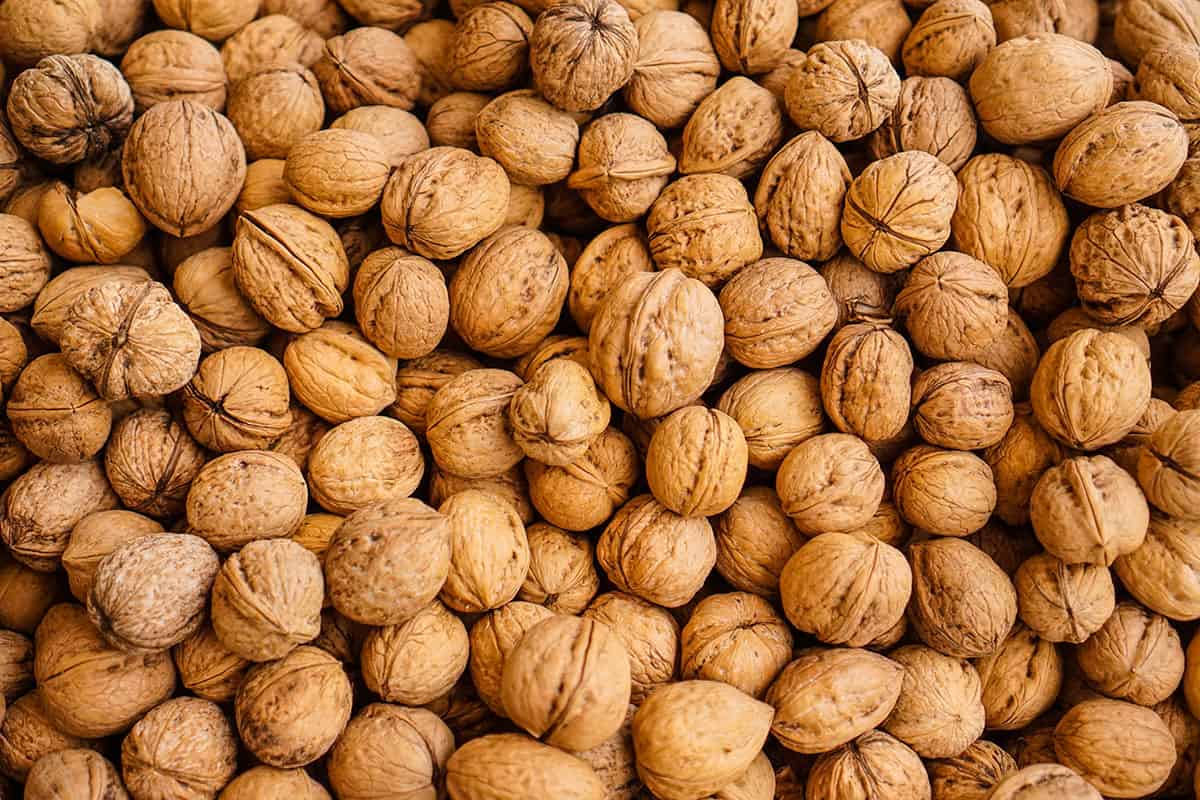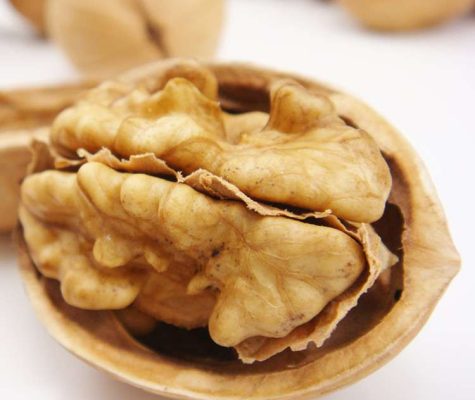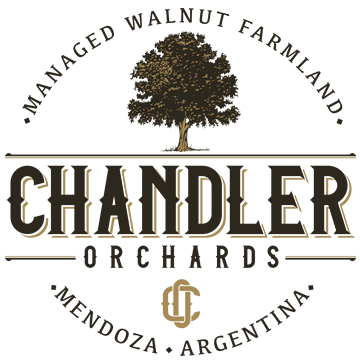The Delicious Chandler Walnut:
The World's Favorite
Here at Chandler Orchards, we are fanatical about the Chandler Walnut. Although there are more than 50 walnut species or cultivars that are commercially grown worldwide, we exclusively grow Chandler Walnuts in our orchard.
History of the Chandler Walnut
The Chandler Walnut was created from the UC Davis Breeding Program run by Eugene F. Serr and Harold I. Forde. Serr and Forde crossed two species in 1963, one numbered 56-224 and another called Pedro. The 56-224 walnut is large but with a weak shell, protogynous, and very fruitful on lateral buds. The Pedro walnut is highly productive with a strong shell, a long-time winner of consumer taste tests, sheds abundant pollen, but does not withstand the heat well. This cross resulted in 35 progeny, two of which became the commercially viable cultivars known as Chandler and Howard.
The resulting Chandler walnut is highly fruitful on lateral buds. It is extremely vigorous and thus it needs to be pruned to avoid shoots with a narrow crotch angle (branches with less than a 45 degree angle). Chandler has fewer pest problems than other cultivars.
Chandler was patented and released to the market by UC Davis in 1979. At the time Harold Forde considered the Chandler walnut to be the most important cultivar that came from the UC Davis Breeding Program. Forty years later we can say with certainty that he was proven right. Today the Chandler walnut is the most planted walnut worldwide.


Chill Hours & Frost Resistance
Chandler trees need 700 to 1000 chill hours per season. The appropriate chilling temperature is 32°F to 45°F (0°C to 7 °C). Sub-freezing temperatures, however, are not desired and can be harmful. Read more about walnut climate requirements.
Chandler grows beginning mid-season and resists sub-zero winter frosts better than other commercial walnut cultivars such as Howard, Serr, Tulare, and Franquette. However, it is more susceptible to a sudden autumn frost. With Chandler, growers must be extra vigilant late in the season.

The Shells
Chandler shells are large, oval-shaped and smooth to the touch. Initially Chandler shells are thin, but as the Chandler tree ages, the shells strengthen.
It is important to note that whatever the age of the tree, the shells have good seals that prevent accidental breakage.
Shells average 13.2 grams.
The Kernels
Chander Walnuts are prized by walnut buyers worldwide for their attractive light color, often described as “pearly”. The kernels are very high quality. They are easy removed from the shell in perfect “butterfly” halves, which means buyers that specialize in hand-cracking will seek out Chandler nuts.
Kernels average 6.5 grams, giving them a kernel-to-shell ratio of 49%. Chandler nuts also conserve better than other cultivars.


Harvest Date
Perhaps the only real disadvantage to the Chandler Walnut is its late fall harvest date. It is harvested 23 days after Payne, making it one of the last walnut varieties to market.
This is more of a complication to northern hemisphere growers, since southern hemisphere growers are not under the same pressure to arrive first to market.
See our Northern vs Southern Hemisphere article for more information about harvest dates and why we believe Mendoza is the best place in the world to grow walnuts.
Pollenizers
Chandler is self-pollinating, but commercial growers such as Chandler Orchards always use a pollenizer to increase nut yield. Cisco, Franquette, and Fernette are the recommended pollenizers.
Read more on Chandler walnuts in Growing Walnut Trees, The Definitive Guide. You can also learn more about the 50 different walnut cultivars in our article on the subject.


